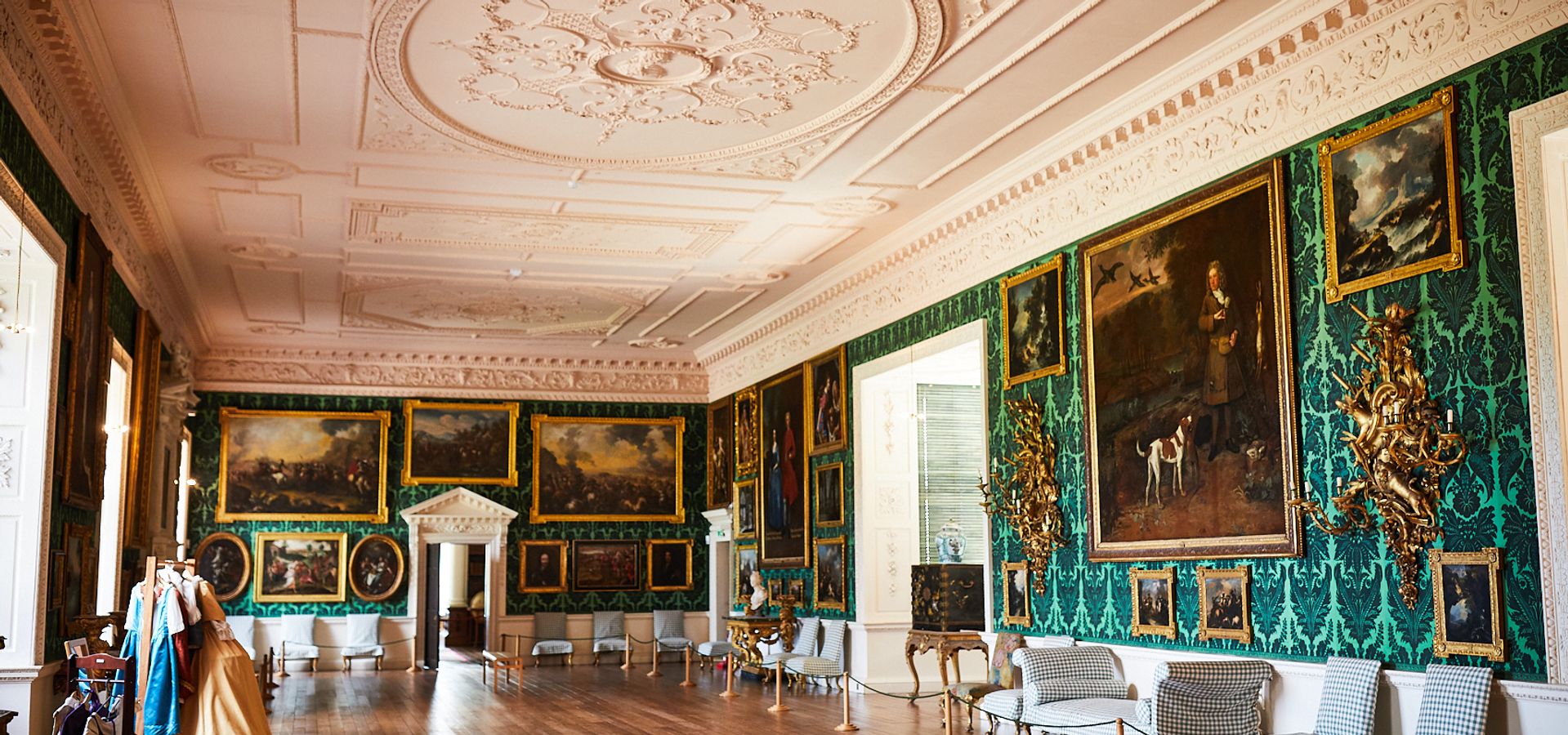
The Temple Newsam Picture Gallery Suite
As anyone familiar to Temple Newsam will tell you, the grand Picture Gallery is the crowning glory of the house. It’s a room that stops most people in their tracks. The current configuration of the room dates to Henry, the 7th Viscount Irwin’s remodelling of Sir Arthur Ingram’s long gallery between 1738 and 1745-6. It’s a tour-de-force of early English rococo style and is probably the most complete grand interior in England of this period.
Much of the success of the Picture Gallery – besides the masterful craftsmanship – is from different elements of it working in unison, including plasterwork, paintings, furniture and textiles. Part one of this blog looks at these elements in general and provides context for part two. Part two explores the textiles in the room, but specifically the floral needlework upholstery that adorns the seating furniture encircling the vast interior of the Gallery. This floral upholstery was the focus of a project between Temple Newsam and Dr Ruth Hughes, who works as a Bioimaging Support Scientist at the Bioimaging and Flow Cytometry Facility of the University of Leeds. Ruth has used her expertise in microscopy to take a much closer look at these beautiful textiles than ever before.
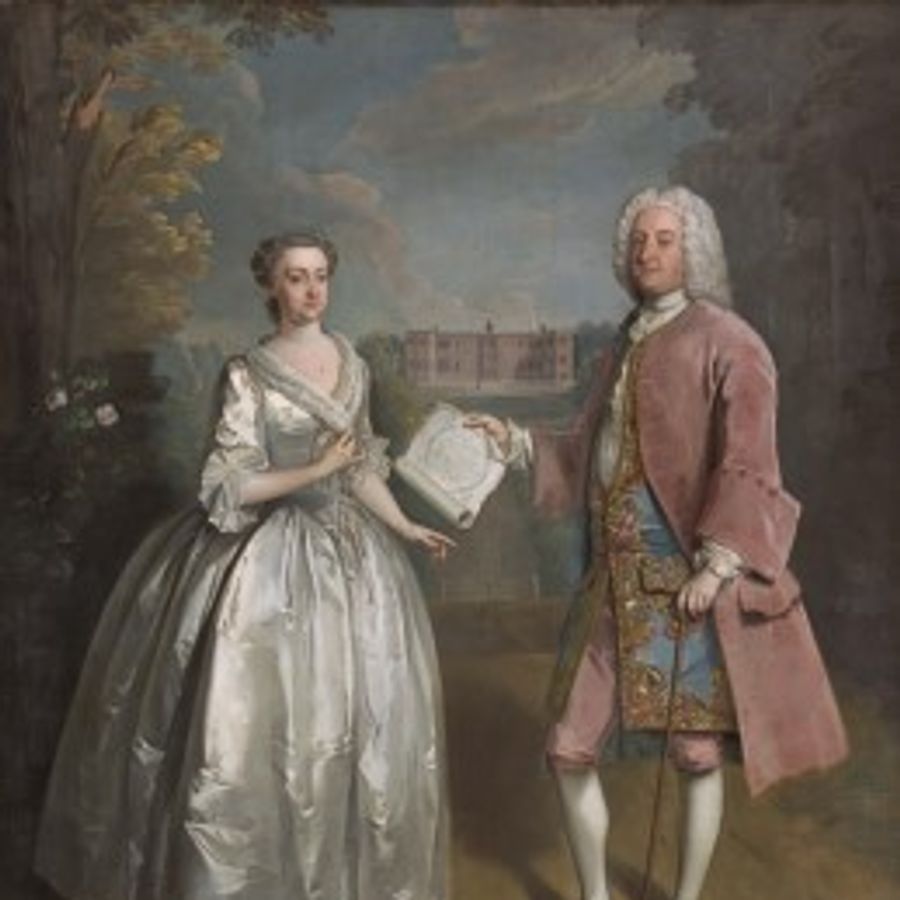
Before examining the fascinating results of this project, it’s important to look at the textiles’ wider context to understand their significance and contribution to the Picture Gallery. Whilst the name of the room refers to its function as a gallery for the pictures of the Ingram family, you can almost read the room itself as a picture. It’s full of meaning and symbolism, with each element a deliberate design choice.
The design theme of the Picture Gallery – besides demonstrating the Ingram family’s loyalty to the Royal family – evokes other environments within the room, to bring ‘the outside in’. The rich green of the flocked wallpaper, complete with stylised leafy patterns, provides a backdrop for paintings and furniture that suggest the outside world. Many of the paintings feature landscapes and seascapes, including the backdrop to the large portrait of the 7th Viscount’s father, the 3rd Viscount Irwin, Arthur Ingram, who is shown hunting. The two chimney pieces feature figures representing the four seasons.
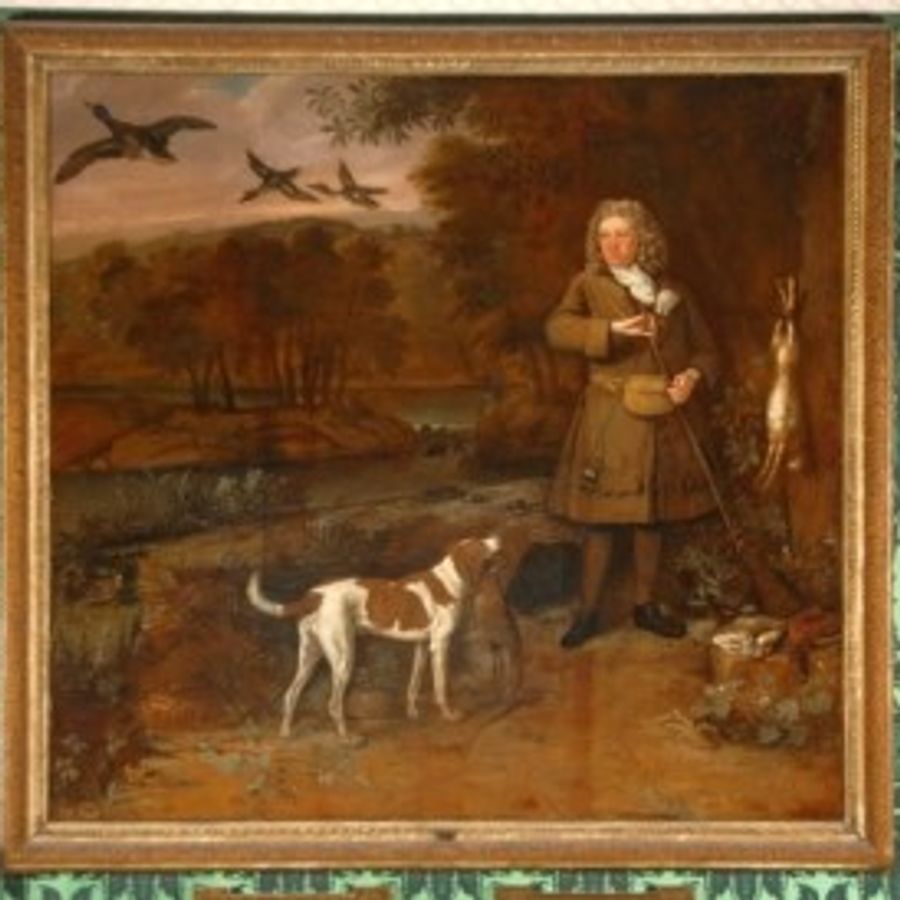
However, perhaps the crowning glory of the room is the extraordinary suite of furniture which incorporates the needlework textiles that are the focus of this blog. All of this furniture belongs to a single commission by the relatively unknown – but virtuoso – London furniture maker, James Pascall.
The furniture is notable for its highly elaborate carving in the then-newly fashionable rococo style. This style – which would often have been referred to as ‘modern’ at this time – can be recognised by its curves and exuberant leafy scrolls in the forms of the letters c and s.
Rococo is also a fantastical style, which is in great evidence in the Picture Gallery. Pascall’s elaborate carving alludes to other worlds, incorporating mythology within sculpted forms. It addresses the theme of metamorphosis described by the Roman poet, Ovid.
A spectacular example of this is found in the enormous and highly elaborate girandoles (wall lights) featuring dogs, deer and bullrushes. This references the grim myth of Diana and Acteon. Acteon, a mortal hunter, glimpses Diana, the Roman goddess of the hunt, whilst she is bathing. Diana, in a fit of embarrassment, angrily splashes Acteon with water which transforms him into a deer. The fleeing Acteon is then hunted down by his own dogs, who do not recognise the deer as their master. These girandoles are mounted either side of the portrait of Arthur Ingram, which perhaps provided the inspiration for their theme.
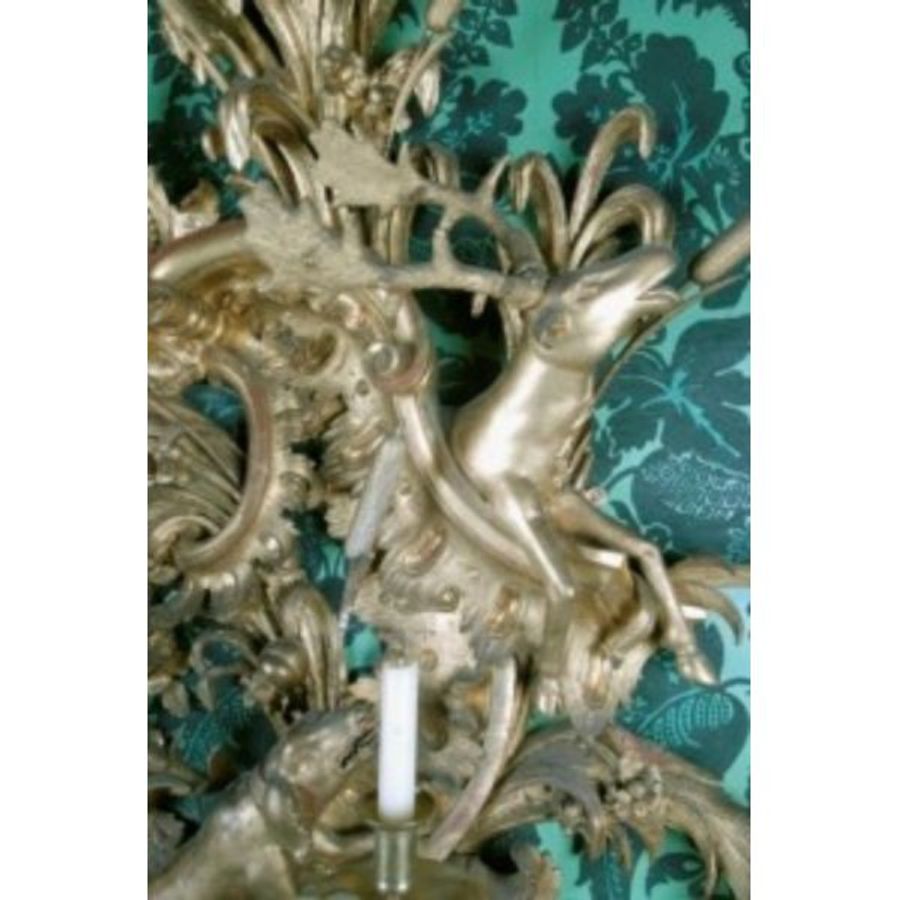
Ovid’s Metamorphoses can also be found in a set of eight torchieres (floor standing candlestands) and two console tables. These refer to the myth of Pan and Syrinx. Pan, a lusty god of the forest, pursued Syrinx, a nymph known for her chastity. To avoid his unwanted attentions, Syrinx asked river nymphs for help, who then transformed her into reeds. Unfortunately for Syrinx, Pan then cut the reeds, turning them into musical pipes, aka Pan’s pipes. The tables show Pan, in the apron, and his hounds, in the legs; the torchieres show Syrinx amongst reeds.
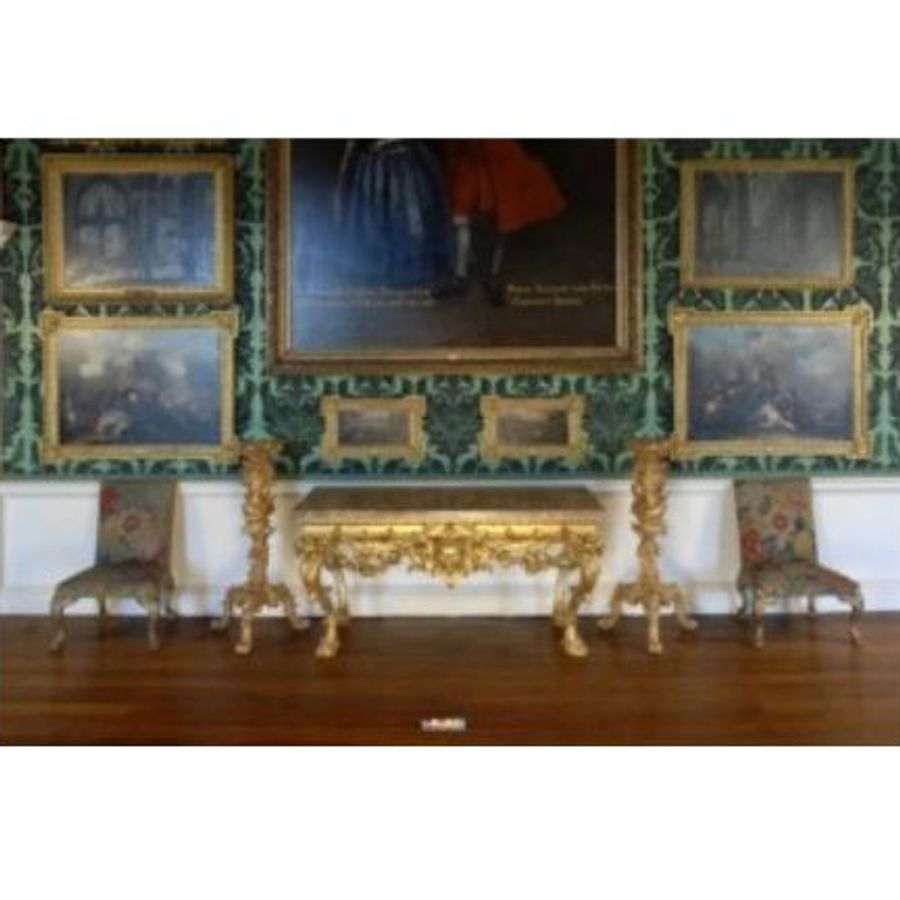
The remarkable seating furniture consists of 20 side chairs, four sofas and one daybed. Although not as exuberant as some of the other pieces in the room, they are just as spectacular- and contribute as much to themes of the room – thanks to their beautiful upholstery. The textiles inject a dazzling array of colour, a counterpoint to the other elements in the room. Given that the seating is placed around the edge of the gallery, it acts almost as a herbaceous border, firmly cementing the feel of the outside within this interior. The seating would originally have been placed on a floral needlework carpet, which formed a border around the room. Some of this needlework survives on a sofa in the Lady Lever Gallery.
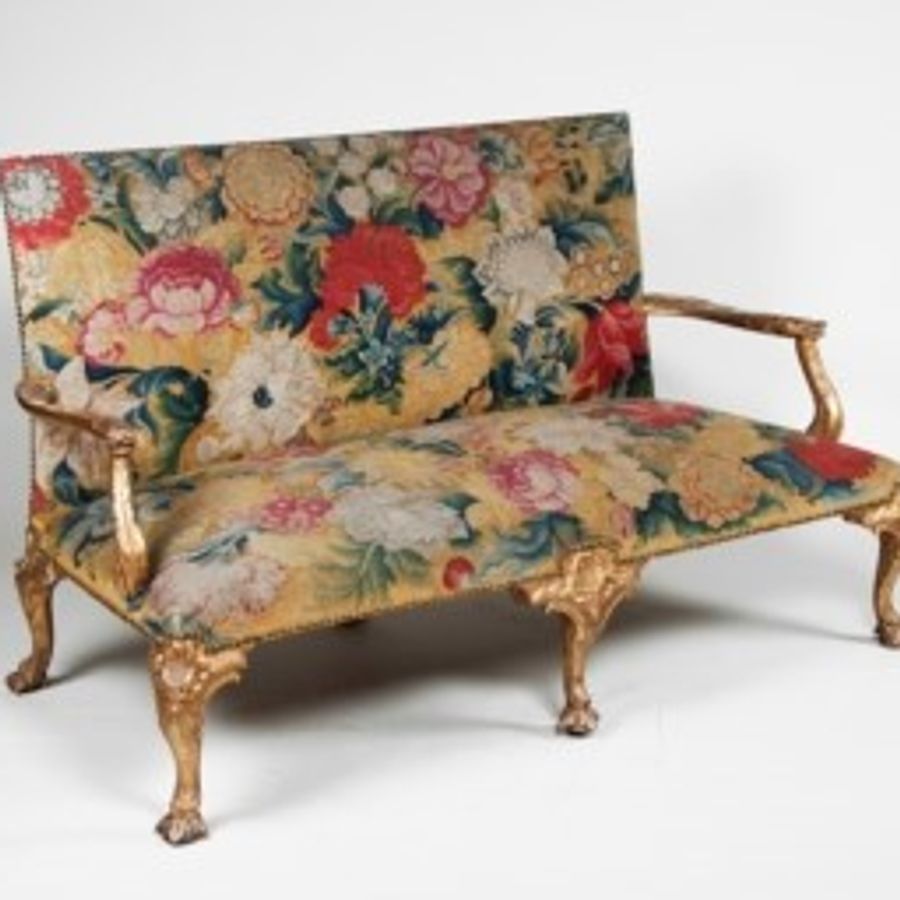
All in all, the many elements of the Picture Gallery combine to form what’s been described as a ‘forest of mythology’. Beyond its spectacular and captivating grandeur, the room has the ability to take its occupants on multiple journeys.
Part two will reveal these extraordinary textiles as never before…
By Adam Toole, Curator of Decorative Art
23 November 2021

